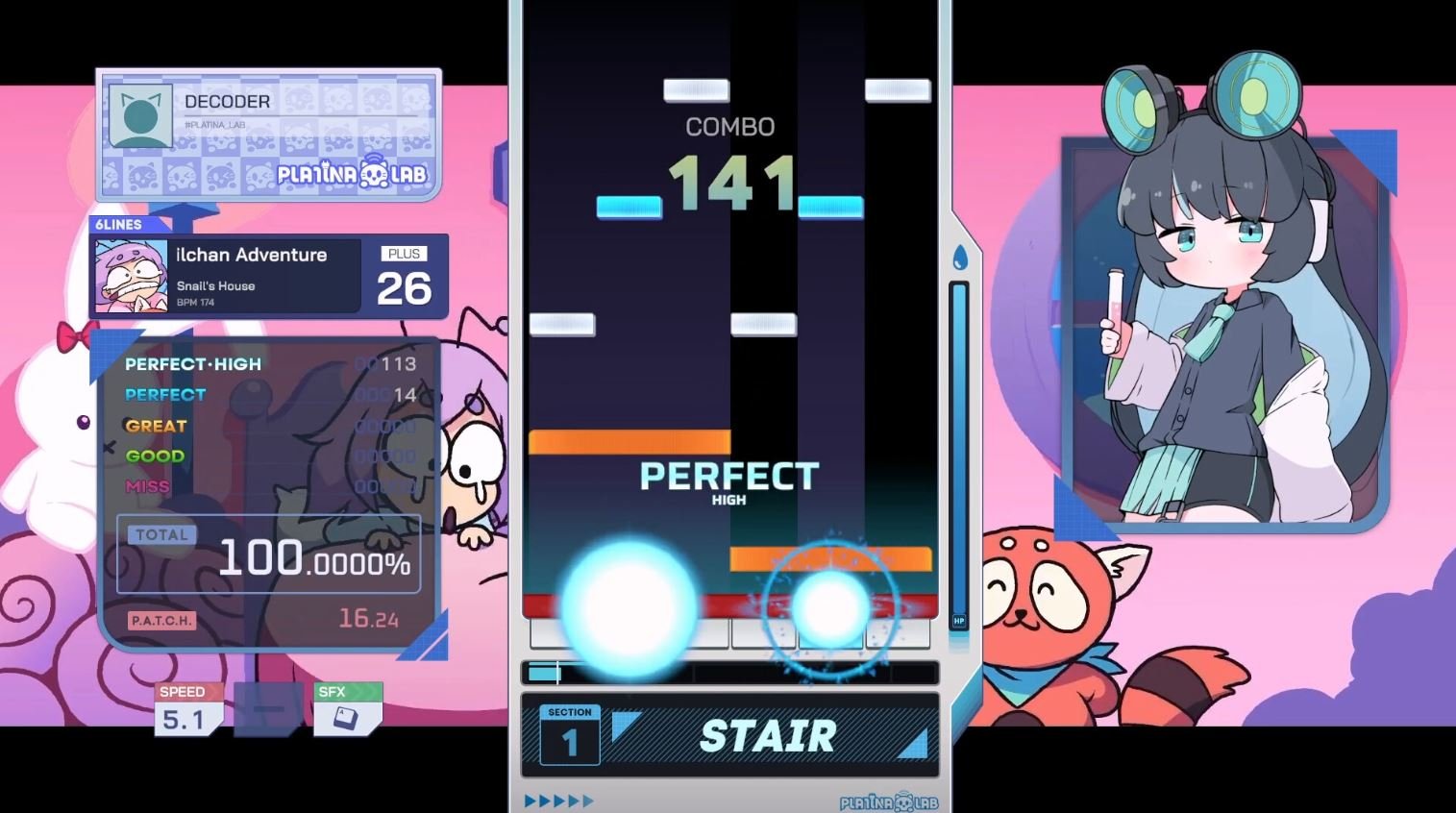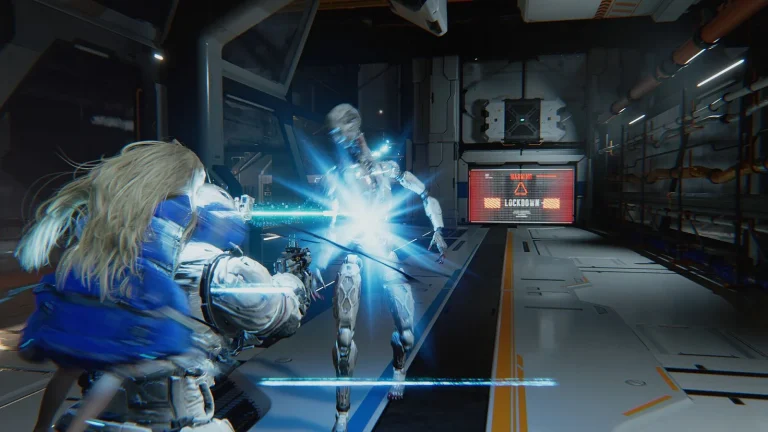Released in Early Access on April 11, PLATiNA :: LAB is a sweet and casual rhythm game available on Steam and Stove, developed by South Korean studio HIGH-END Games. Beyond classic rhythm gameplay, one of the game’s main draws is its fluid and bubbly 2D character animation, created in Live2D.
As you play, PLATiNA :: LAB’s characters react in real time, celebrating when you rack up long combos or frowning when you miss a note. These reactions are apparently governed by logic more elaborate than it seems, creating a kind of spontaneous interactivity you don’t often see in the rhythm game genre.

AUTOMATON recently sat down with Tae-Jun Kim, CEO of HIGH-END Games, who talked to us about how PLATiNA :: LAB uses Live2D in development, what inspired the project, and where it’s headed next.
Live2D Cubism Official Homepage
Live2D Cubism Download Page
PLATiNA :: LAB Steam Store Page
──First, please tell me about PLATiNA :: LAB.
Tae-Jun Kim (hereafter Kim):
PLATiNA :: LAB is a story-rich rhythm game featuring a variety of unique characters and captivating music tracks. It’s currently in Early Access, and we’re working hard toward its official release. We’re constantly exploring ways to provide a comfortable experience for both players new to rhythm games and those familiar with the genre.
──What led you to establishing HIGH-END Games?
Kim:
I’ve been playing rhythm games since circa 1998. This was around the time the genre first appeared, so the desire to become a developer myself came naturally. I originally started working as a dev at a game company, but eventually, I wanted to start my own company and bring my own rhythm games to the world.
Capturing the vibes of an arcade rhythm game
──The combination of rhythm gameplay with Live2D feels pretty groundbreaking. What was your goal with the game’s looks and presentation?
Kim:
Rhythm games can be broadly divided into arcade games and home console games. While arcade games often have beautiful and flashy presentation, that’s not really the case for console rhythm games. This is what we focused on with PLATiNA :: LAB, making a console rhythm game with the atmosphere and presentation of an arcade game.
──It does give off the vibe of an arcade game. Were there any specific titles you drew inspiration from?
Kim:
While there are many rhythm games out there that incorporate characters, I don’t recall any precedent for Live2D models being animated in an interactive way within a game. Since we’ve opened up new territory, there weren’t any particular games that we used as reference, but we did get inspiration from watching VTuber streams.
──Where did the idea to integrate Live2D into the rhythm gameplay come from?
Kim:
The idea itself is something I’ve been thinking about ever since my days working at a game company. Rhythm games are often seen as solitary, since you play and find satisfaction in them alone. My goal was to break away from that image.
──Do you think we’ll see more rhythm games adopting similar Live2D features in the future?
Kim:
Following the release of PLATiNA :: LAB, rhythm games incorporating similar systems have appeared, and I think we’ll be seeing more of this. We live in an age where consumers are accustomed to dynamic content like YouTube Shorts and Instagram Reels. Game characters are no longer static images, but are expected to move in a lively and natural way. As one of the pioneers in integrating Live2D into rhythm games, I’m excited to keep an eye on future developments.
──When I played PLATiNA :: LAB myself, I felt the character animations during the rhythm sections were very cleverly handled, they never got in the way of gameplay. Was there anything you paid particular attention to when placing the Live2D models?
Kim:
Our basic principle was that the model’s movements should never interfere with the area where the notes fall, so as not to distract the player. It was quite challenging to fully bring out the characters’ individuality without interfering with the gameplay, but we made efforts to avoid any excessive effects or movements.
──What was your goal when creating PLATiNA :: LAB’s characters in Live2D?
Kim:
We didn’t want them to just be displayed on screen, but to be navigators who will communicate with the player. That’s why we incorporated various interactive elements and used voice acting.
──What are some examples of the game’s interactive features?
Kim:
The characters react in real time based on how you perform, like when you connect 100 or 200-note combos, or when you miss a note. They also respond to things like mouse clicks on the song selection screen or even idle moments when you’re not doing anything. We’re also planning to expand these interactions further. For instance, we’re currently developing a system that will allow simple conversations with the characters.
──So you’ll be able to communicate with the girls! I can see that becoming a popular feature. How have players responded so far to Live2D characters cheering them on during gameplay?
Kim:
I think our efforts to make the characters more endearing have paid off. So far, we haven’t seen any feedback about the characters being distracting. I think the power of Live2D is immense.
──That’s reassuring to hear. So you reckon Live2D played a part in getting players attached to the characters?
Kim:
Yes, I think the characters’ natural, lively movements made in Live2D have been a big factor in why players have grown to loved them.
──By the way, which character is the most popular?
Kim:
Looking at the amount of fan art and how often she’s talked about, I think Bambi is the most popular among players. When you click on her with the cursor, she makes a surprised motion, which seems to be what’s charming a lot of players. Within the development team, Roro is very popular. We love how she tugs her hood over her face when you get a game over, and we’d like to make more use of that gesture.
We’re currently producing and selling merch to help players feel even more attached to the characters, and we’re also preparing a story mode for the official release, so I hope you’ll look forward to it.
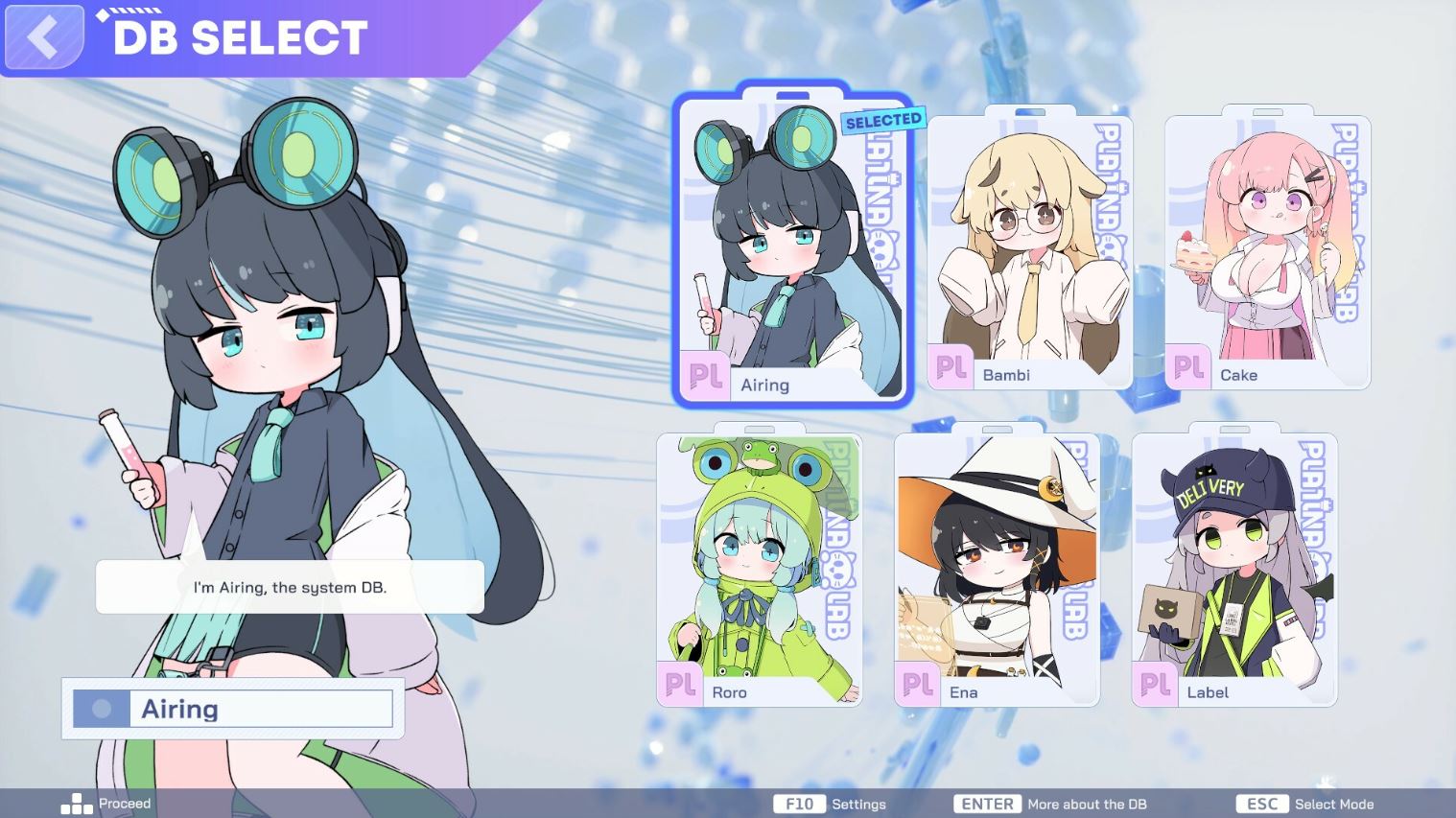
Logic that makes the characters come to life
──By the way, the characters’ reactions to gameplay don’t seem purely random. How exactly do they work behind the scenes?
Kim:
We use multiple layers of logic. They don’t simply react based on your combo count or misses, but, for example, there are reactions that only trigger when you achieve a specific combo threshold within a set time, or when you perform differently across separate sections of a song. There are even notes that trigger unique reactions like, like the “pitch notes” activated with the Enter key.
──I see, so it’s not just a simple condition like smiling when there’s a combo. I feel like this is one of the reasons why the characters feel more lifelike and less “programmed.”
Kim:
While the reactions are fully logic-based, we tried to design them to feel natural and somewhat unpredictable, so I’m glad to hear that came across.
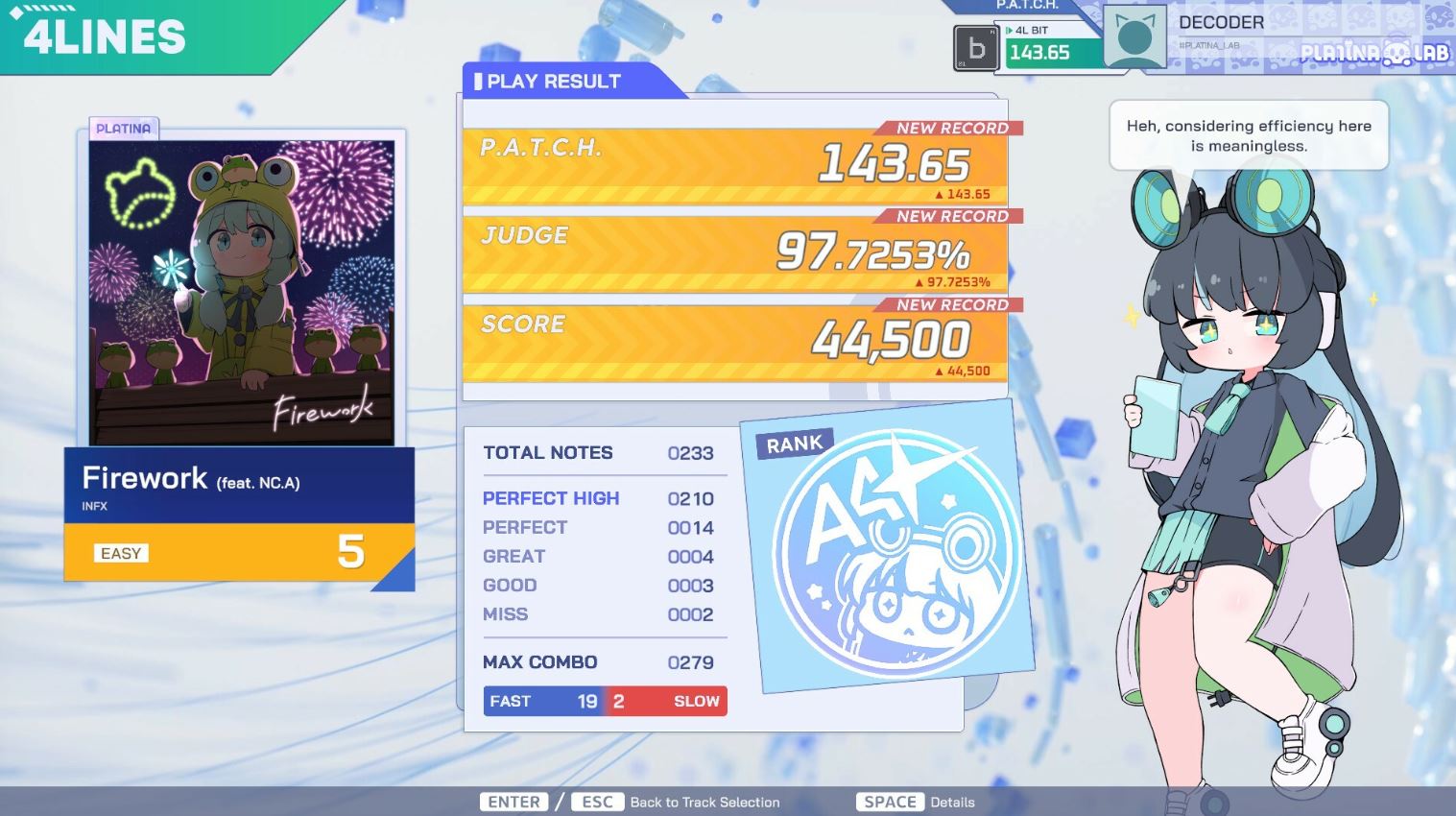
Fulfilling my “promise” to Live2D with steady sales
──Why did you choose Live2D out of all the 2D animation tools available?
Kim:
Even before we began development, we knew we wanted to incorporate dynamic character movement, so we used Live2D even for PLATiNA :: LAB’s prototype. Also, when we reached out directly to the Live2D team, the communication was excellent, which contributed to our decision.
── What were the costs of using Live2D like?
Kim:
Live2D’s licensing terms are friendly to newly established companies, so the financial hurdle for implementation was quite low.
──It sounds like you have a great deal of trust in the arrangement.
Kim:
Live2D’s license model requires you to pay fees once your company’s sales exceed a certain amount, so from the moment we first signed the contract, I declared: “We’ll work hard to make sure we can pay those fees someday.” I’m really happy that I was able to keep that promise (laughs).
──Judging from what you’ve said, sales seem to be doing well. Is that the case?
Kim:
We’ve already surpassed our initial sales targets, so we expect to be able to sustain the business without any problems for at least the next two years. Going forward, we hope to achieve even greater growth through partnerships with investors and publishers.
—What’s the breakdown of sales by country like?
Kim:
South Korea leads in sales, followed by Japan, and then the US. I think rhythm games as a genre are driven primarily by the Korean and Japanese markets within East Asia, but we’re currently also preparing to enter the Chinese market. PLATiNA :: LAB features many songs by not only Korean composers, but also famous Japanese composers. In fact, Korean rhythm game players have been heavily influenced by Japanese rhythm games throughout the years.
—Is that so? I’m a bit surprised to hear that.
Kim:
Yes, I think Korean players who enjoy subcultures like rhythm games and anime have been very interested in the work of Japanese composers for a long time, regardless of genre.
For example, songs created by voice-synthesis engines using specific characters have become hugely popular, and it’s common to see songs performed by game characters spread as memes through YouTube Shorts or Reels.
Also, just as K-POP is loved globally, I think that, unlike in the past, it is now important to align with the cultural trend of enjoying various genres of music, including J-POP, without prejudice, and to express that enjoyment naturally.
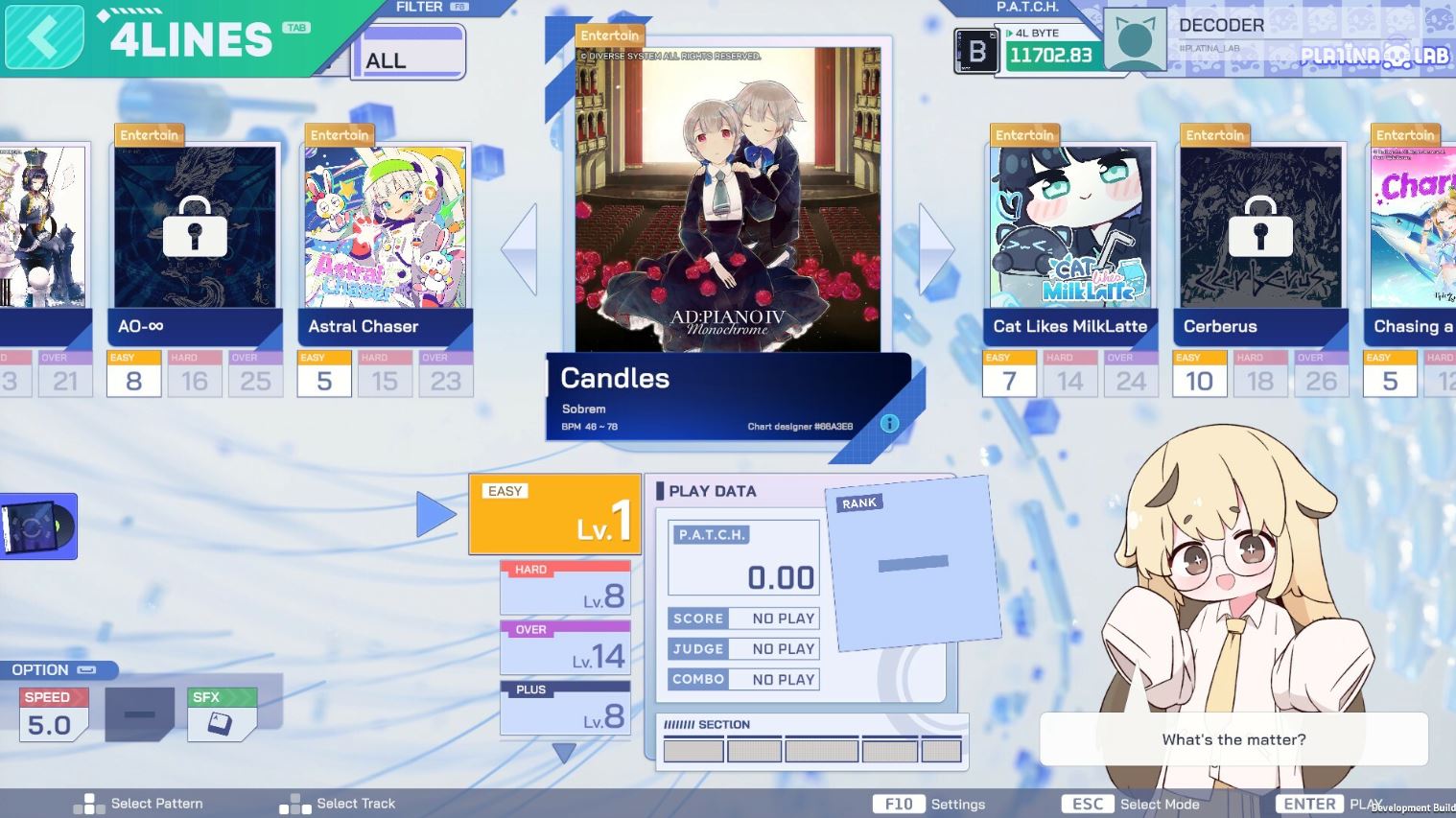
—I think PLATiNA :: LAB has more Japanese songs than other Korean rhythm games. How have Korean players responded?
Kim:
Thankfully, we receive a great response each time a new song is added. I think that until now, Korean rhythm games have not used music from Japanese and other overseas composers to its full potential. I myself have always enjoyed playing games and watching anime and movies, and I often find myself thinking, “I’d love play this song in a rhythm game.” Realizing that wish through PLATiNA :: LAB has been one of my biggest motivations during development. We place great value on creating “firsts” through constant new challenges.
High-quality production through a shared vision and team synergy
—How many people work on the Live2D production?
Kim:
We have a two-person team: an illustrator and a modeler. Although we have a dedicated staff member for modeling, we sometimes outsource depending on the situation. The modeler has been active in this field for many years and is also active as a VTuber. They’re a very unique person, so I’ve actually never met them in person… (laughs)
—(laughs) Are this modeler’s skills what allow PLATiNA :: LAB’s characters to jump off the screen like that?
Kim:
Exactly. They provided us with tons of ideas about how the characters should move, and their models were of extremely high quality even at the prototype stage. We didn’t really face much difficulty with animation production.
However, while technology and technique are important, I believe the synergy among our designers also had a major impact on PLATiNA :: LAB. I think that collectively deciding on the direction of the game’s presentation produced really positive results.
—That sounds like an ideal balance for a development team. Not relying on a single “elite player,” but achieving results through working together.

New features in the works ahead of PLATiNA :: LAB’s full launch
—How much new content are you planning to add for the full release?
Kim:
HIGH-END Games is a newly established company, and PLATiNA :: LAB is a new IP born there. We feel that the most important thing is to deliver this content to a wider audience. The early access version features six characters and just under 80 songs, and we plan to add more free content to the official release version, which is scheduled for April or May next year. One of the systems currently under development is an “Affinity System.”
—That seems like a good match for PLATiNA :: LAB, given that your goal is for players to get attached to the characters. How does the system work?
Kim:
It’s like something you’d see in a dating simulation game, where characters’ affinity for the player increases over time. Higher affinity unlocks new effects/interactions.
— Will character animations change depending on affinity level?
Kim:
Not exactly. As a character’s affinity level rises, the number of animations available will increase. These new animations can then be equipped to the character like skins.
—So it’s like expanding the range of possible reactions. That sounds great, but it must also increase your workload quite a bit.
Kim:
Yes, adding new animations is a lot of work, but it’s an important part of helping players grow attached to the characters, so we’re determined to keep developing them no matter how difficult it gets.
—I imagine that as more assets get added to the game, data management will also become more complicated. Are there any particular steps you’re taking to handle that?
Kim:
At the moment, we haven’t run into any major difficulties on that end. We’re currently working on six new characters as well as new costumes for existing characters. We’re establishing a structured internal system to manage data effectively, including these new assets.

—Is there anything you’d like to try with Live2D in the future?
Kim:
I’d like to make the most of the visual effects we’ve created so far for the game. I’m not aiming for something like full-on movies, but for the story mode, we’re experimenting with ways to make players feel even more emotionally connected to the characters. Please look forward to it.
—Finally, do you have a message for those interested in picking up PLATiNA :: LAB?
Kim:
PLATiNA :: LAB by HIGH-END Games was developed to carve its own way, rather than following in the footsteps of existing rhythm games. We’ve put a lot of effort into differentiating it from other games, whether it be through the characters or the music selection. We’ll continue to work with Live2D to introduce new features, so please look forward to the full release next year. We want to make a game that can be enjoyed for more than 10 years, not just one or two years, so we appreciate your support.
—Thank you for your time!
Live2D Cubism Official Homepage
Live2D Cubism Download Page
PLATiNA :: LAB Steam Store Page
[Writer, editor: Aki Nogishi]
[Interviewer, editor: Ayuo Kawase]

